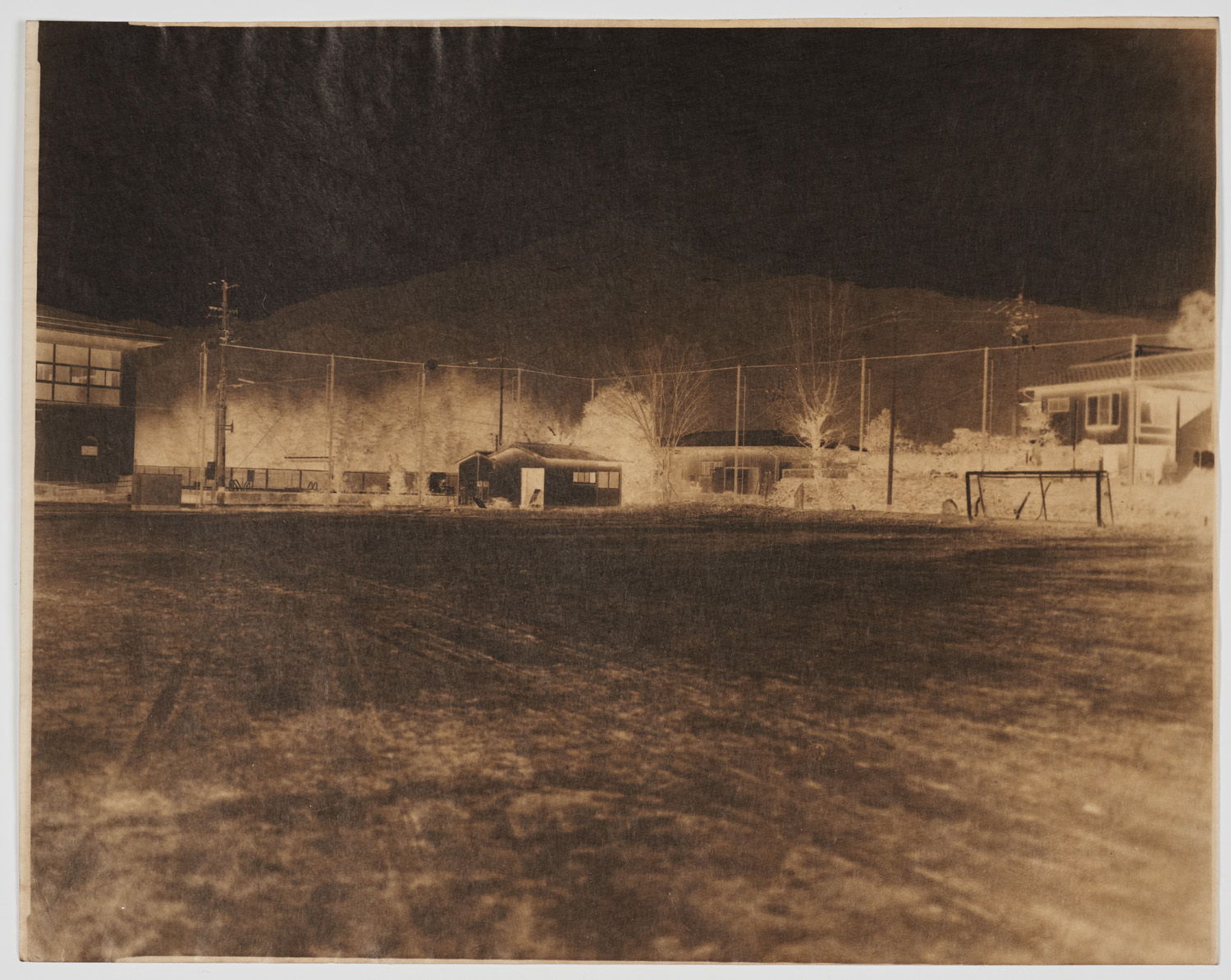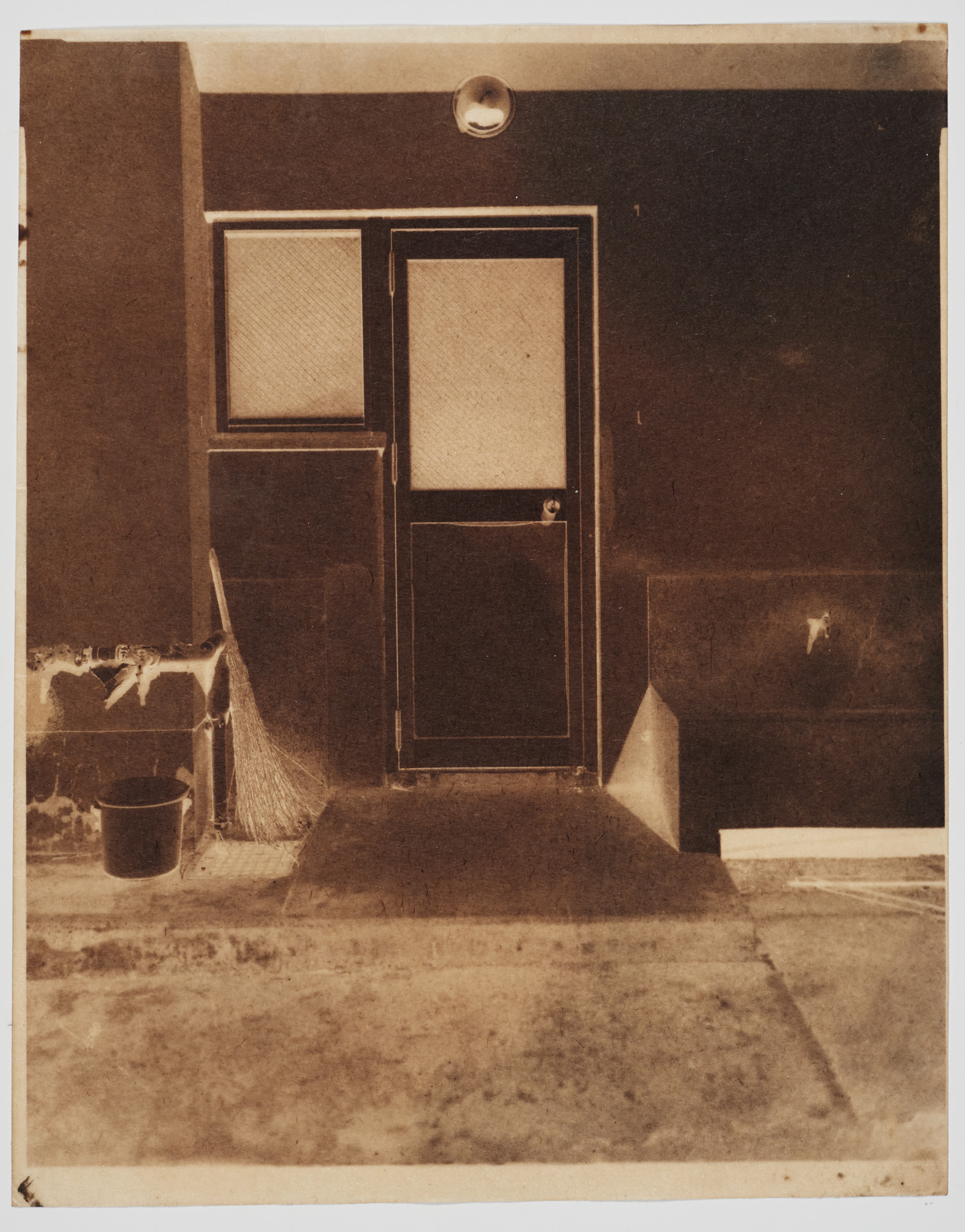


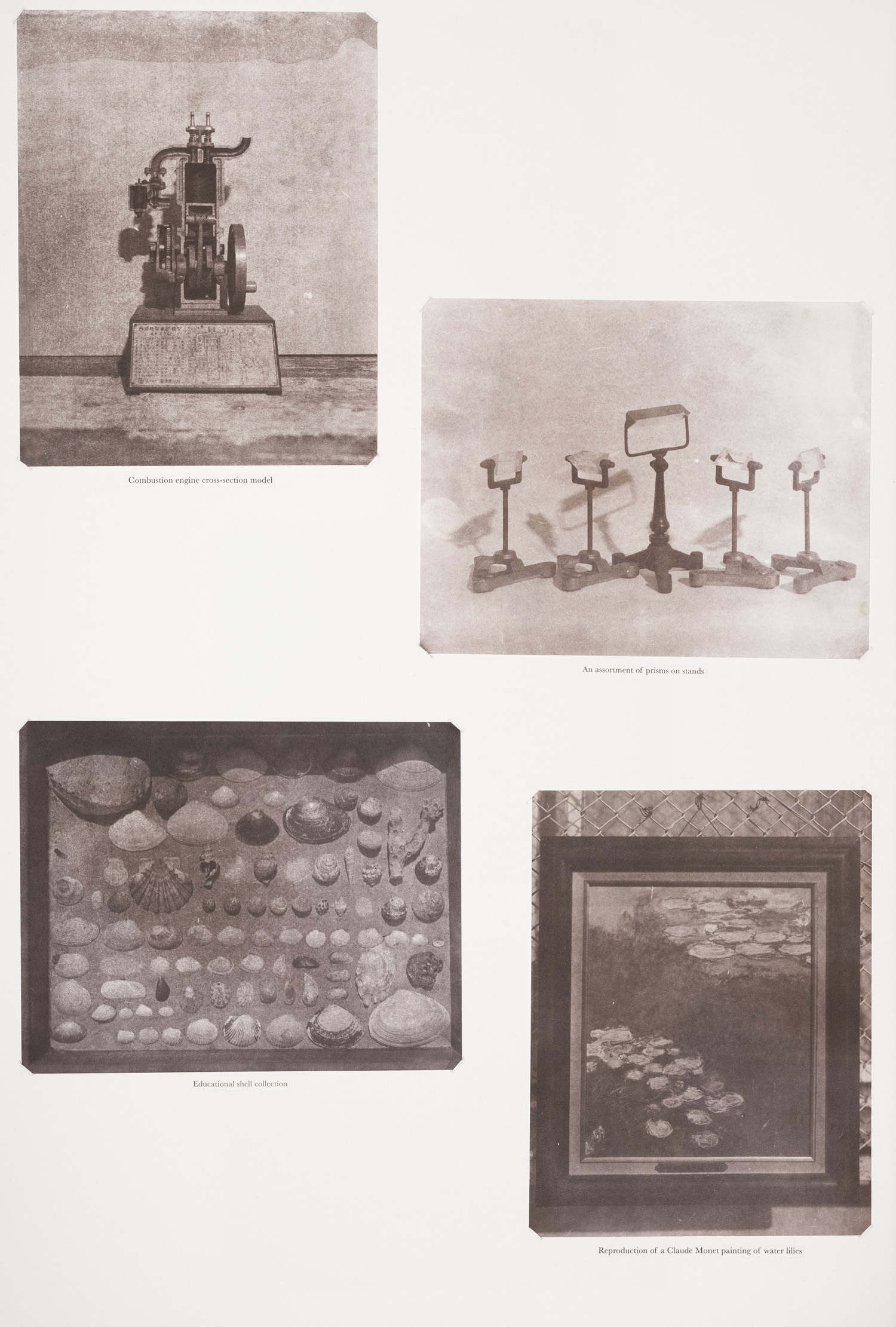


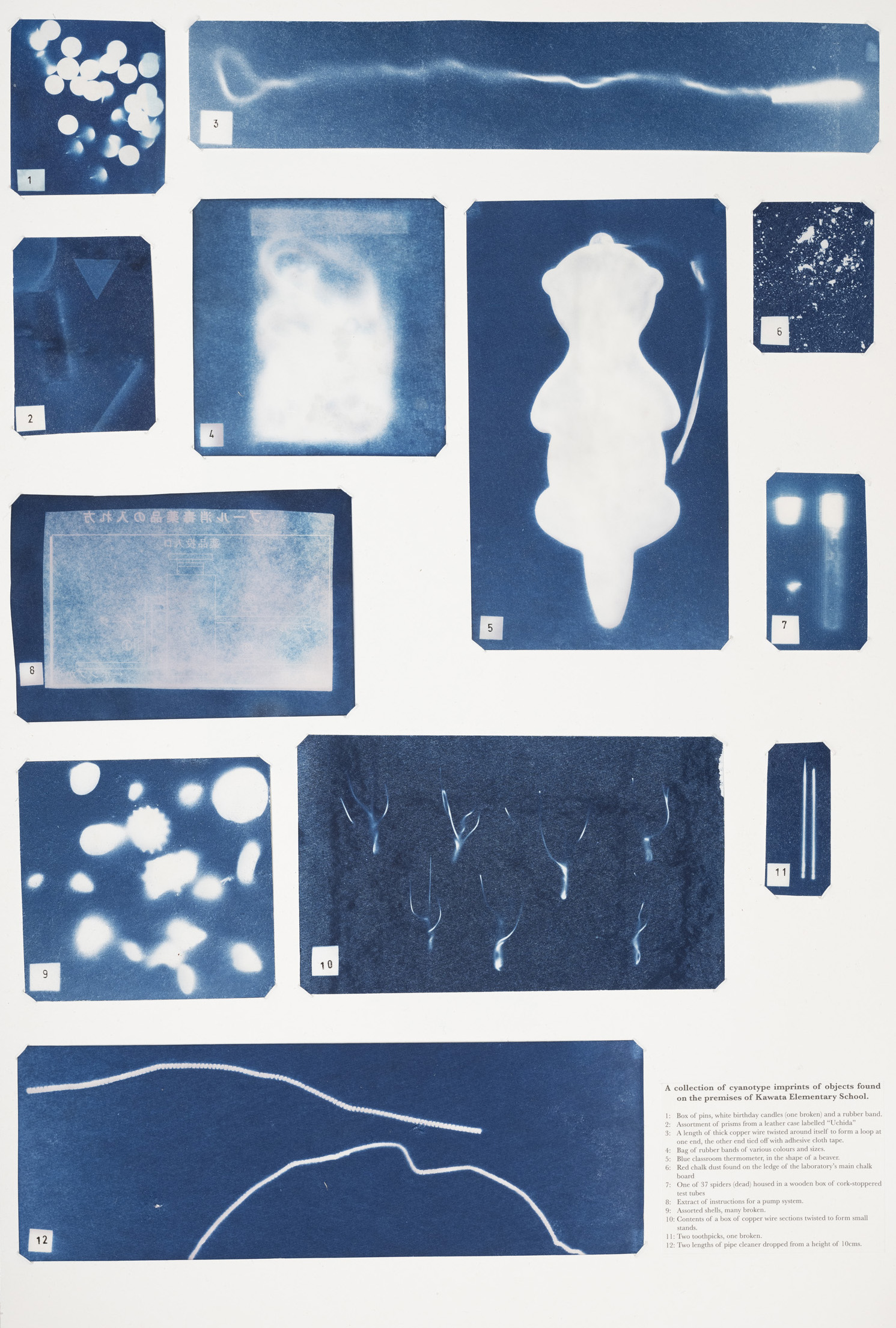

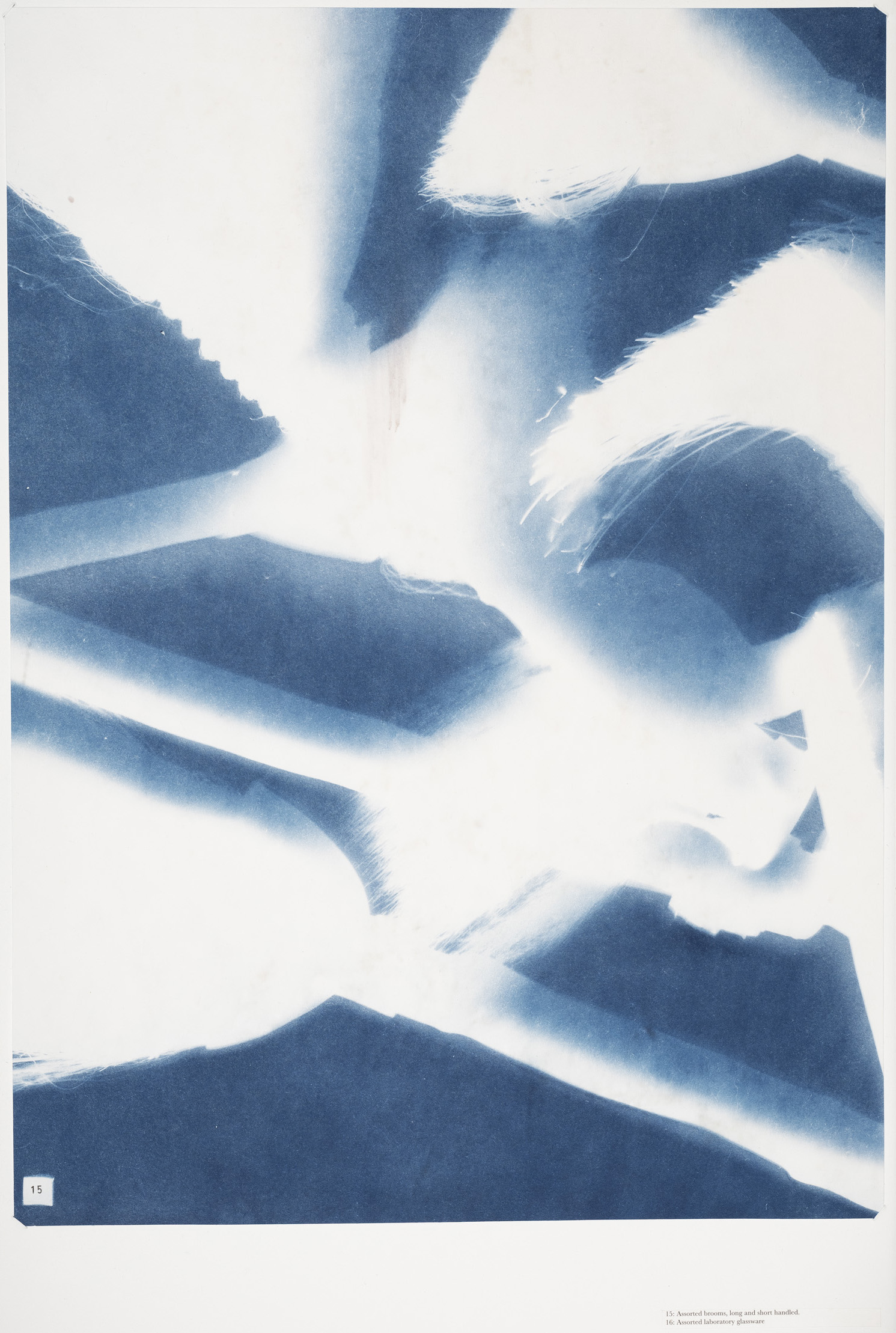
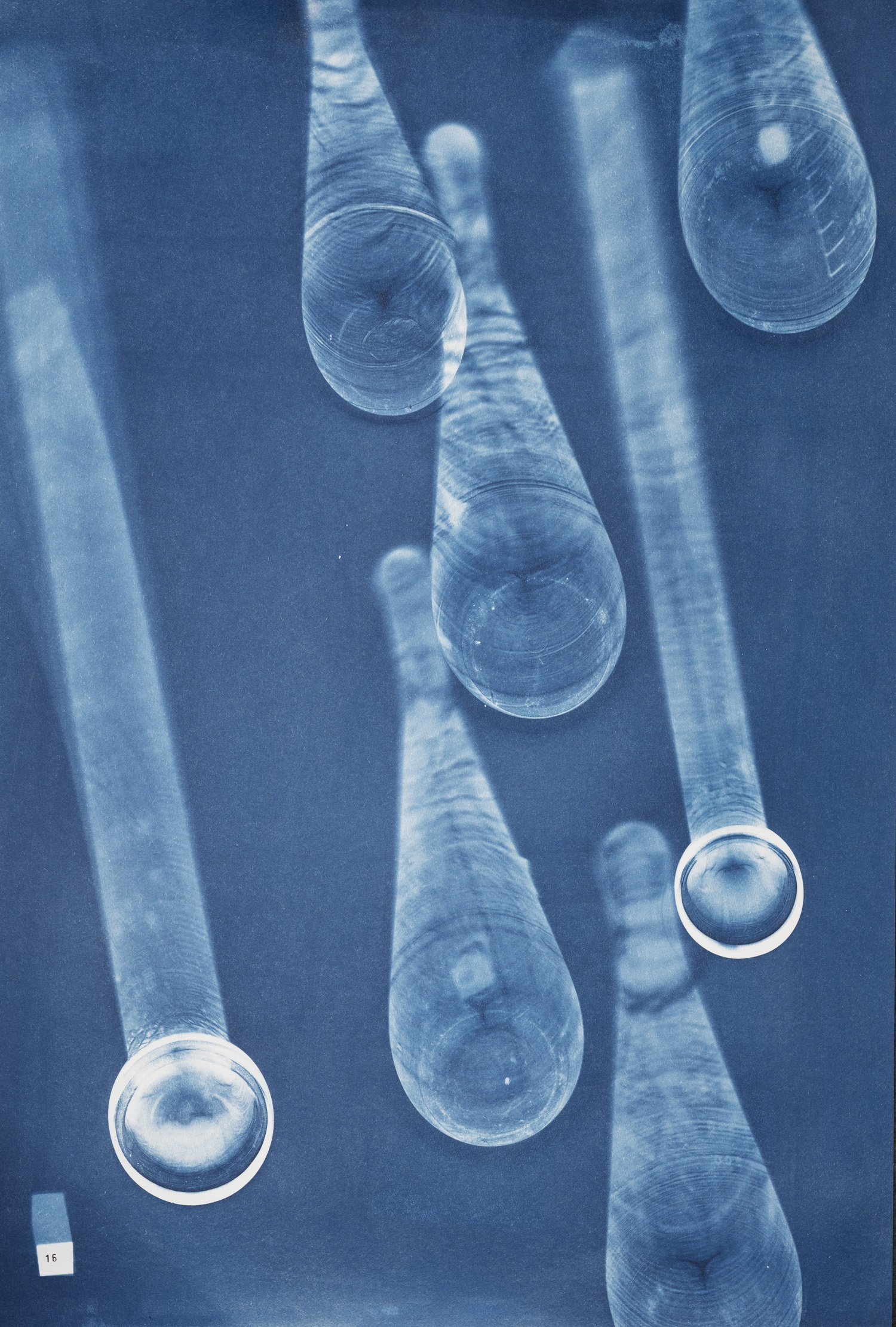
ON THE USE OF NOVEL DEVICES FROM THE DISTANT WEST (2019)
12 Konjaku salted photographic prints on Hakuho paper 19.5cm x 25cm
16 cyanotypes of Hakuho paper, various dimensions
Handmade presentation portfolio lined and backed with dyed Kozu paper, 52cm x 74cm
This project takes its name from Ensei Kiki Jutsu (遠西奇器述) “Use of Novel Devices from the Distant West”. Published in 1854, Ensei Kiki Jutsu was the first Japanese book to contain a description of the technology of photography.
On the use of Novel Devices from the Distant West was produced during a residency at the Awagami paper factory in the Tokushima province of Japan. Founded in 1952 the factory specialises in both traditional handmade Japanese papers and in synthesising eastern and western paper making techniques.These photographs were made using handmade paper from the factory and where possible, local ingredients such as: local eggs, milk, salt and potato starch.
The technical methods used for this work are amongst the oldest photographic processes: calotypes (paper negatives), cyanotypes and salt prints. They were produced in a darkroom made from things found in a local abandoned school and all of the images and contact prints were made inside the school grounds and buildings. Many of the educational props resembled Victorian museological didactic objects: specimen trays of fossils and geological samples, cross-sectional models of engines and prisims mounted on brass stands.
16 cyanotypes of Hakuho paper, various dimensions
Handmade presentation portfolio lined and backed with dyed Kozu paper, 52cm x 74cm
This project takes its name from Ensei Kiki Jutsu (遠西奇器述) “Use of Novel Devices from the Distant West”. Published in 1854, Ensei Kiki Jutsu was the first Japanese book to contain a description of the technology of photography.
On the use of Novel Devices from the Distant West was produced during a residency at the Awagami paper factory in the Tokushima province of Japan. Founded in 1952 the factory specialises in both traditional handmade Japanese papers and in synthesising eastern and western paper making techniques.These photographs were made using handmade paper from the factory and where possible, local ingredients such as: local eggs, milk, salt and potato starch.
The technical methods used for this work are amongst the oldest photographic processes: calotypes (paper negatives), cyanotypes and salt prints. They were produced in a darkroom made from things found in a local abandoned school and all of the images and contact prints were made inside the school grounds and buildings. Many of the educational props resembled Victorian museological didactic objects: specimen trays of fossils and geological samples, cross-sectional models of engines and prisims mounted on brass stands.
